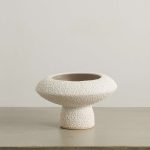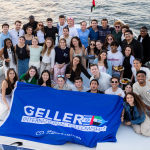Kate Starbird and Jamila Wideman sat in a conference room after finishing their senior seasons at Stanford in April 1997 with something that hadn’t been previously available to women’s college basketball stars: options.
A year earlier, the NBA had announced that it was creating a women’s league, the WNBA, launching that summer. It was a summer league with a limited schedule but promised TV deals, name recognition and big-money backing.
Meanwhile, the American Basketball League, which played a traditional eight-month schedule in the fall and winter, had launched a few months earlier with the promise of competitive salaries, player-focused leadership and a chance to own stock in the league.
For the first time, U.S. players could stay home to continue playing after college, instead of heading overseas. And not only that, but these women had two options of domestic play to choose from.
Wideman, a guard who had helped lead the Cardinal to three Final Fours, chose the WNBA, going third overall to the Los Angeles Sparks in the inaugural draft of collegiate players.
Starbird, the 1997 Naismith Player of the Year, was excited to play in her hometown for Seattle’s ABL franchise. To seal the deal, the ABL offered her a contract that according to reports at the time made her the highest-paid player in the league, with a salary around $150,000.
“I remember really wanting to be in Seattle. They had a much different financial model [than the WNBA],” Starbird told ESPN. “I think I probably made three times as much playing in the ABL as my first year in the WNBA.”
But Starbird’s career in the ABL was short-lived. A few days before Christmas in 1998, just 15 games into her second season, she was getting an MRI on her knee when her phone rang. The ABL was bankrupt and had folded. She was stunned — and wondered who was going to pay for her MRI.
“It broke my heart when the ABL folded,” Starbird said. “I just cared about my team. I wanted to be in Seattle, and it was really hard.”
Twenty-six years later, the WNBA is enjoying record attendance, viewership and ratings. Meanwhile, the ABL has largely been relegated to history. But even though it lasted just 2½ seasons, it remains an important chapter in professional women’s basketball history, one that included much of what today’s players still want.
This week, a new 3-on-3 league, Unrivaled, launches, and the echoes of the defunct league are unmistakable. This league — founded by Napheesa Collier and Breanna Stewart, with Milwaukee Bucks star Giannis Antetokounmpo, Olympic gold medalist Michael Phelps and US Open champion Coco Gauff among the investors — offers the world’s best players a chance to play in the United States during their offseason with some of the highest salaries in women’s sports history and, for some, equity in the league.
Those were the founding principles of the ABL, which had a stock option plan that gave players 10% ownership of the league and salaries that saw Starbird make more than twice as much in 1997 as Caitlin Clark made in 2024.
Unrivaled, which hopes to be the future of women’s basketball, shares the motivations — and some of the potential pitfalls — of the ABL.
This is the story of the rise and fall of an upstart league from the people who lived it.
STEVE HAMS WANTED a place for his daughter to play basketball in the United States if she made it to the pro level. In early 1995, the longtime Hewlett Packard executive called Anne Cribbs, a former Olympic swimmer, and Gary Cavalli, who ran a public relations and marketing firm in Palo Alto. What did they think about helping him start a women’s professional league in the United States?
The idea wasn’t foreign to Cribbs, a gold medalist in 1960 who had pondered a similar idea when she and her teammates had few options following the Games. She began thinking about it again in the 1990s, when she became an avid supporter of Stanford women’s basketball.
“One thing kind of led to another, and we were so close to it and so inspired and committed to it,” Cribbs said. “It just turned out that we ended up running the league and building a team.”
What started with a meeting over coffee became a relationship that evolved far past the scope of public relations and marketing. The group moved quickly to take advantage of the momentum around the 1996 Olympics, where the U.S. women’s basketball team went undefeated to win its third gold medal. Their business plan was to launch a league in eight cities — Columbus, Ohio; Richmond, Virginia; Denver; San Jose, California; Atlanta; Seattle; Portland; and Hartford, Connecticut — with large women’s college basketball followings.
To recruit players, they got creative. Cribbs and Cavalli hosted a Stanford Hall of Fame dinner in June and ensured Cavalli would be strategically seated next to Jennifer Azzi, a former Stanford player and point guard on the 1996 Olympics team. For two hours over dinner, Cavalli pitched her their vision. Azzi, now the chief business development officer for the WNBA’s Las Vegas Aces, was immediately intrigued.
“The thing I liked about the ABL and what was happening was they made us part of the process,” Azzitold ESPN. “I see now, working for the Aces, the players have to be part of what you do on the business side. The players have to be bought into everything.”
Teresa Edwards, who had just won her third Olympic gold medal, was next on board, helping with introductions across the basketball world and with sponsors. With the exception of Sheryl Swoopes, Lisa Leslie and Rebecca Lobo, who would go on to be the faces of the WNBA, nine members of the U.S. women’s national team announced at a news conference in September 1995 that they had signed letters of intent to play in the league.
“I don’t think it took a lot of convincing. It’s like, do you want to play in the United States and not go overseas … and make good money?” Azzi said. “There was not a lot of twisting of arms.”
Through cold calls and networking, Hams and Cavalli raised $4 million to launch the league, much of the initial funding coming from Atlanta businessman Bobby Johnson, who became the league’s chief financial officer, and sponsorship deals with Reebok and Phoenix Home Life Insurance. (Johnson stepped down in 1997 after being indicted on Medicaid fraud.) Hams quickly started hiring general managers and coaches for each franchise.
Portland general manager Linda Weston, like many of her peers in the league, started her job only three months before opening night.
“There was no team name, there was no office, there [were] no uniforms. There was nothing. We hadn’t even drafted the team at that point,” Weston told ESPN. “I had been to the tryout in Atlanta, but I had to give my previous employer 30 days’ notice. So I got to Portland on June 30 and on Oct. 19 was opening night. … It was basically 24/7 for three months.”
DEBBIE BLACK WAS more than 10,000 miles away from her hometown of Philadelphia when her brother faxed the news: A women’s pro league was launching in America.
Black, a 5-foot-2 guard who had played college basketball at Saint Joseph’s, was sitting in her apartment in Australia when her brother sent her news about the tryout. She’d spent part of the past eight years playing for the Tasmanian Islanders in Australia’s Women’s National Basketball League, but Black desperately wanted the chance to play at home. The ABL was hosting an open tryout in Atlanta.
“My brother stayed on me for a couple of weeks. I was kind of scared to try out, I was afraid I wouldn’t make it, but I figured, you know what, he’s right, I’ll just try out,” Black told ESPN. “I’ve been working my butt off for eight years after college.”
Black paid for her airfare from Australia and, along with hundreds of other players, a $200 fee to attend a tryout in Atlanta.
She was placed in Group A, which competed for three days.
“Anybody that had small college to high school level ability could come in and try out,” Columbus Quest coach Brian Agler told ESPN. “The ABL didn’t furnish anything — they were on their own, they footed the bill themselves and tried out.”
A handful of players advanced to Group B, which consisted of smaller college and lower-level Division I players. Then 20-25 players went to compete in Group C, with players who had higher-level Division I and professional experience.
“And through that last group each team would evaluate, create their war room,” Agler said. “That’s basically where you would get your draft picks from. It lasted eight days. It was grueling.”
When it was over, Black returned to Australia and waited for the draft.
“It was 3:30 in the morning Australia time,” she said. “I was drafted in the sixth round to Colorado.”
With one phone call, Black learned she was going to get the chance to play in front of her family for the first time in nearly a decade.
“It was one of the most unbelievable times in my life,” she said.
Meanwhile, team and league officials reached out to many of the best recently graduated players and higher-profile veterans who had been playing in women’s leagues overseas. Sixteen top players were assigned to the ABL’s eight teams in June 1996.
Others, such as Valerie Still, Kentucky‘s all-time leading scorer, were recruited to sign as free agents. But after 12 years playing in Italy, Still had recently retired from basketball to start a family. Her son was only a few months old when she received a call from one of her old college assistant coaches encouraging her to try out for the Columbus Quest.
“I didn’t want anything to do with them,” Still told ESPN. “I’m a mother — and this was before women thought they could be mothers and play and do all that. And I’m like, no, I don’t even have a pair of shoes. I’m breastfeeding.”
Eventually, she gave in.
“They needed a post player,” Still said. “I was 34 years old, six months out of having my son. I had this workout with kids that were straight out of college.”
That group included Nikki McCray, Katie Smith, who had just finished playing at Ohio State, and veterans Shannon Johnson, Tonya Edwards and Andrea Lloyd.
Still drove from Kentucky to Columbus with her son — and breastfed him before heading onto the court for the tryout. She thought it went terribly.
“It was like pioneer days,” she said. “We’re in a big hangar, a barn, with one official size court and four side baskets. There’s no air conditioning.”
Still finished the three-hour tryout discouraged and ready to drive back to Kentucky. Agler had other plans in mind. He asked her to be part of the team.
Exhausted, dripping with sweat and wearing shoes that she bought from an outlet store on the drive, Still looked at Agler as she held her infant son. There was one condition.
“I said, ‘Listen, my son is most important to me. If he can’t travel, if he can’t go to every game, I can’t sign this contract,'” she said. “And so, my son didn’t miss a practice. He didn’t miss a game. He traveled with us.”
WHEN THE LEAGUE tipped on Oct. 18, 1996, one of the opening-night games featured the two players who had been the earliest and most influential advocates for the league: Azzi’s San Jose Lasers against Edwards’ Atlanta Glory. There were lines around the corner to get in.
“We got Teresa and Jennifer Azzi to open the game and talk to the crowd, and it was sold out,” Cribbs said. “And I walked into the parking lot and there were scalpers trying to sell tickets. And I thought, ‘You know what? Maybe this means we arrived.'”
“I remember just the popularity, everywhere we went people knew the Lasers,” Azzi said. “They knew who we were. We would draw 10,000-plus at the arena we played. Just the sheer excitement around all of it, I just remember it being an incredible time.”
The Columbus Quest were picked to finish in the bottom of the league in the preseason polls, but they won 18 of their first 19 games and went on to win the inaugural title.
As a group, they knew as soon as the first few games they had something special.
Still remembers the atmosphere on the team was unlike anything she’d ever experienced. There was freedom to be yourself and have fun, as long as the job was getting done on the court.
“Before the game, my teammates would have [my son] in the stroller and they would run laps around the basketball court for warmups,” Still said.
Shannon “Pee Wee” Johnson and Sonja Tate would encourage the team’s die-hard fans to bring them soda and Twizzlers on the bench during games, Still said. And Smith noted how much joy veterans who had spent their careers playing overseas, such as Tate, Johnson and Still, experienced getting paid to play in front of their families.
“It was just electric and such a gift,” Smith said. “It never felt like work. It was great. A great group. We really truly had a blast.”
THE END OF the first ABL season marked the beginning of the WNBA’s first. And by that time, the warning signs were piling up.
Ruthie Bolton, who had been drafted by Portland, ended up signing with the WNBA before she played a game in the ABL. After helping the Quest win the inaugural title and being named MVP that season, McCray went to the WNBA, where she signed a three-year deal that included an endorsement and promotional package that made her a face of the league, according to reports at the time.
“I was just so mad at her,” said Still, who thought of McCray as a sister. “But she did the right thing.”
In New York, the WNBA was quickly building, and the two leagues were competing for TV and sponsorship contracts and loyalties. Cavalli, Hams and other investors felt increasingly frustrated at the ABL’s inability to land a big broadcasting deal and investors, which they knew would be instrumental in getting the funding they needed to survive. But, they said, it seemed like it was being blocked by executives who didn’t want to bet against the WNBA and risk angering the NBA.
Before it launched, the WNBA had TV deals with Lifetime, ESPN and NBC. Though ABL games aired on Lifetime and regional sports networks, by 1998, Cavalli said he and other ABL stakeholders visited every network but managed only a deal to pay CBS to air two playoff games.
“We were facing a 900-pound monster that was getting more and more powerful,” Cavalli said, “and knew that we were up against it in Year 3.”
“It was just electric and such a gift. It never felt like work.”
The ABL’s players, meanwhile, did everything they could to keep the league going. They said yes to nearly every ask to help promote the league and its teams.
“We did a fashion show one night and some other things that were just really fun and different,” said Katy Steding, who played for the ABL’s Portland Power from 1996 to 1998. “For the most part, you were just kind of like, ‘What do we need to do? Sign me up. I’m in.'”
When the third ABL season launched in 1998, there was a gift from the basketball world: The NBA lockout, ABL officials hoped, would give basketball fans a new incentive to check out the women’s league. Attendance increased 23%, according to reports at the time, to an average of 4,333 fans per game — though it was a fraction of the WNBA’s 10,869 average in its first year.
And there was one large warning sign to players: The ABL, according to Cavalli and Starbird, had asked them shortly before the season if it was possible to lower their salaries.
“We heard that things were rough,” Starbird said. “In Seattle, we were hopeful because there was a group talking about buying a team, which would have been an influx of funding.”
And with the NBA on lockout, Starbird’s Seattle Reign played in KeyArena, where the Seattle SuperSonics would have been playing. At one point, nearly 11,000 fans attended a game.
“At the time we folded, we were playing in front of massive crowds,” Starbird said. “We knew they were having rough times, but we were experiencing something that felt very different.”
Elsewhere around the league, things were more bleak.
“The first signs were bills that didn’t get paid,” Weston, the Portland GM, said. “We were pretty successful, but the way the league worked was you sent all the money to the league and they paid the stuff. And I started discovering that bills hadn’t been paid, and that’s never a good sign.”
For a little more than a year, Joe Lacob, now the owner of the Golden State Warriors and WNBA expansion Valkyries, was key to keeping the league going whenever it was running short on cash. Lacob put in about $1 million, according to Cavalli.
“[Lacob] was one of those amazing guys who if we were short on payroll in a given month, I could actually call him and he’d send me a check or transfer money into the account,” Cavalli said. “He saved my rear end on numerous occasions.”
The money ran out before Christmas. There was no path forward without a significant TV deal. On Dec. 22, 1998, the board of directors voted to suspend the rest of the season and declare bankruptcy.
PLAYERS DESPERATELY CALLED their agents, looking to see if they could land in the WNBA. In Seattle, potential owners quickly held a news conference to lobby for a WNBA expansion team (it came in 2000).
“We didn’t even get a chance to mourn,” Starbird said, “because so quickly we all started to angle for like, ‘OK, what comes next and how do we keep basketball going in Seattle?'”
Four months after the league folded, ABL players were included in the WNBA’s 1999 draft. Of the 50 players selected, 35 came from the ABL, including Starbird, who went to the Sacramento Monarchs. Azzi, who had reportedly considered retiring after the ABL folded, was drafted by the Detroit Shock with the fifth pick. Katie Smith, Tonya Edwards, Andrea Lloyd, Sonja Tate and Angie Potthoff all reunited with Agler, who had left in 1998 to become coach and general manager of the Minnesota Lynx.
Now, 26 years after the ABL shut down, the WNBA’s front office and coaching ranks are filled with former ABL players and coaches. Smith was the associate head coach for the Lynx during last season’s runner-up finish, Azzi works in the front office of the Aces, and former Portland coach Lin Dunn was the general manager for the Fever when they drafted Caitlin Clark. Lacob’s Valkyries, the WNBA’s first expansion team since 2008, will begin play this year, and he has already said his goal is for Golden State to win a title within five years.
Starbird, who retired in 2004, has been a season-ticket holder for the Seattle Storm for a decade now. And Cavalli is cheering them on as well.
“People always ask me, do you want the WNBA to be successful or do you resent them because they basically put you out of business?” he said. “And I always say the same thing. No, no, no, no. I want the WNBA to be successful. We wanted there to be a women’s basketball league in the United States of America. We felt that we had the best concept and the best players, so we wanted it to be the ABL, but when the ABL folded, we wanted the WNBA to be successful. And I’m absolutely thrilled with what’s going on right now.”








